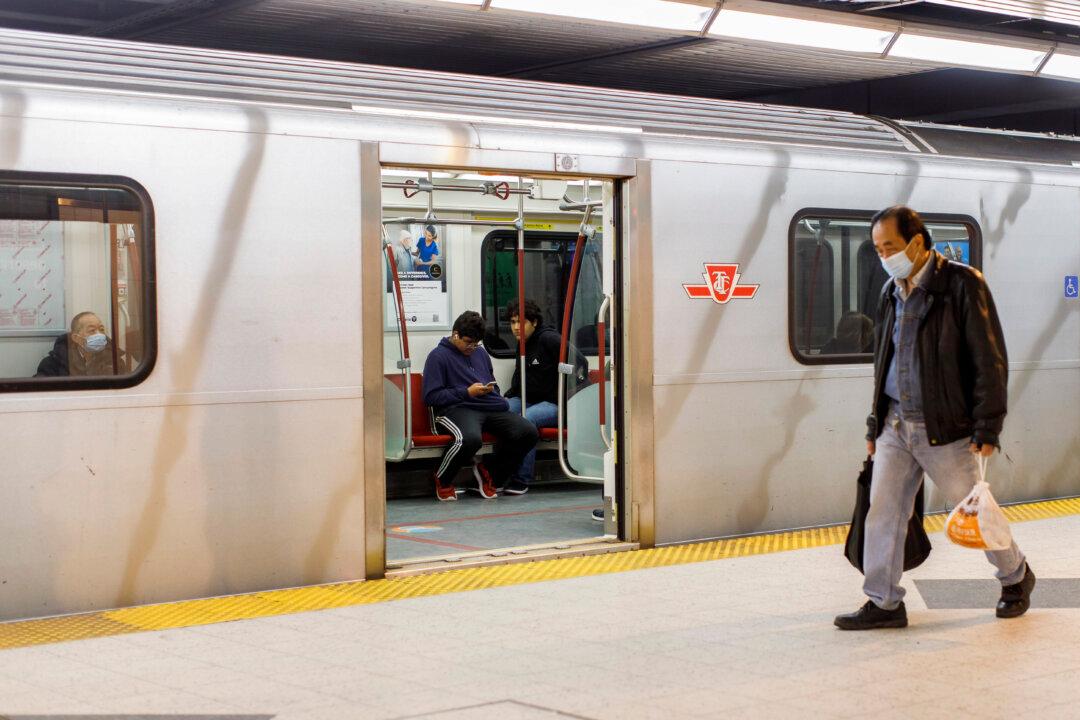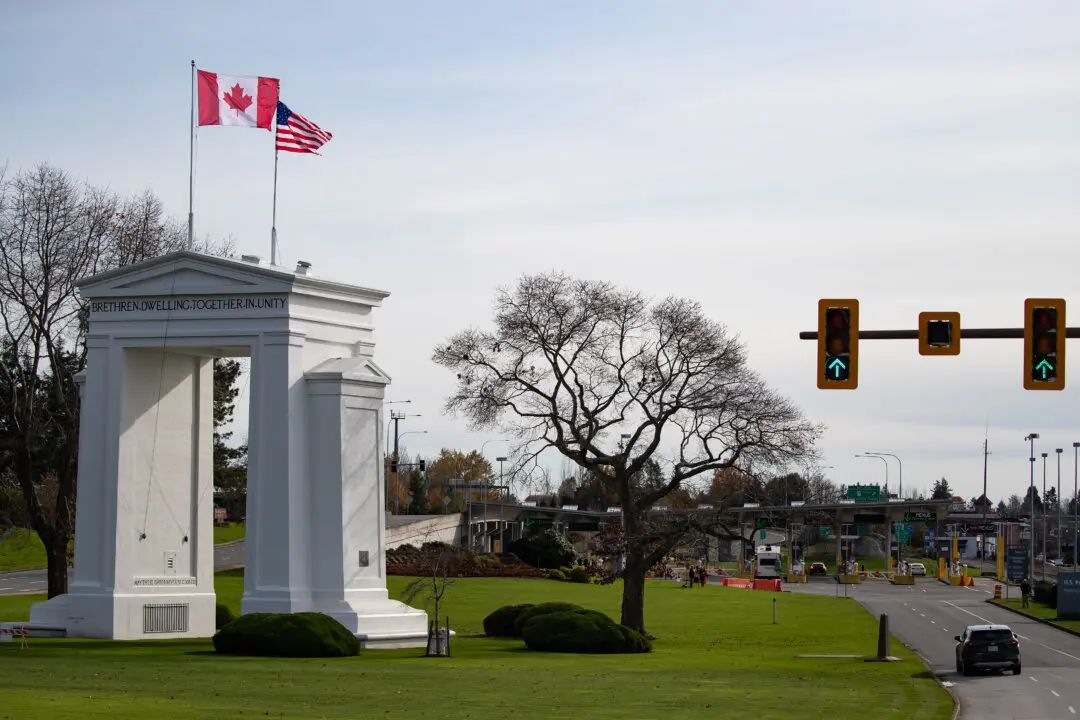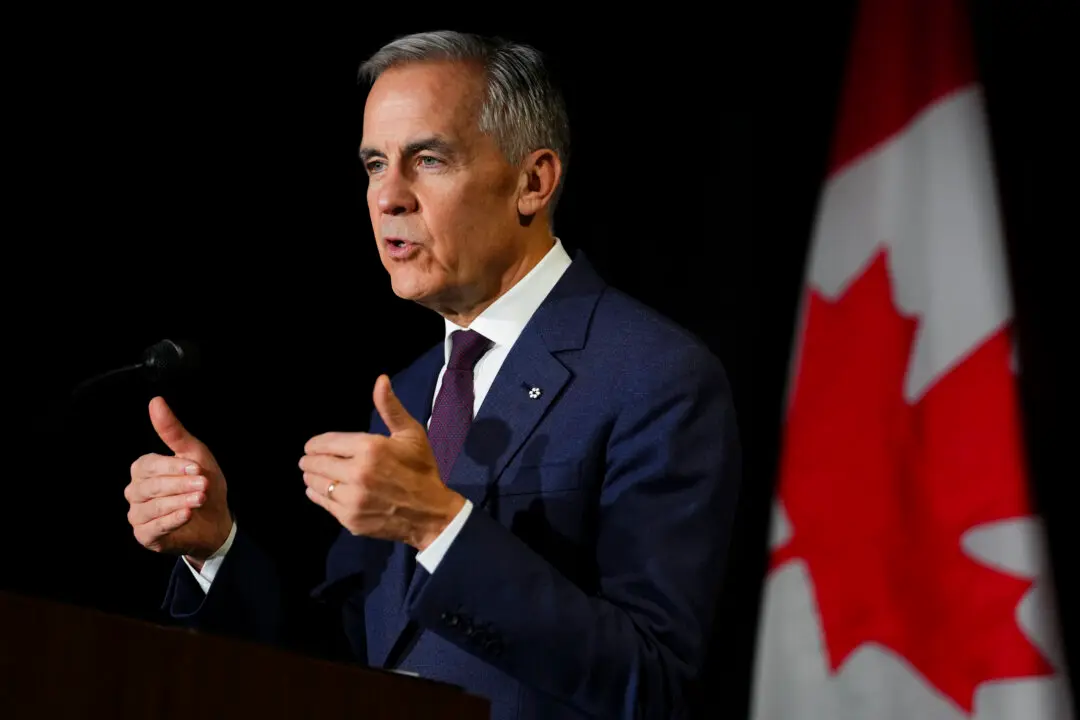
Riders take a subway train on the Toronto Transit Commission station in downtown Toronto, on April 1, 2023. The Canadian Press/Cole Burston
The Toronto Transit Commission (TTC) is cracking down on fare evasion by phasing out ‘no-tap’ gates at its subway stations.
No-tap gates automatically open for certain eligible customers, rather than having a TTC collector manually open the gate after a fare has been paid.





